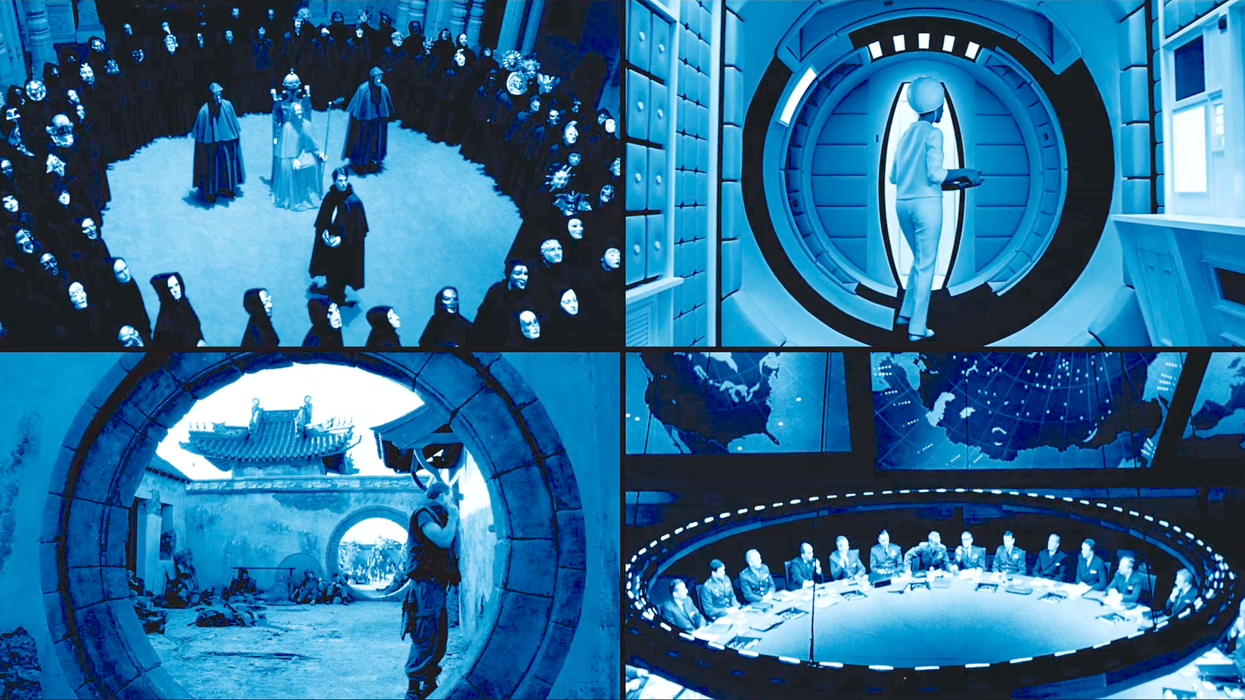2019: A Kubrick Odyssey
It has been 20 years since the death of Stanley Kubrick, and this engaging mashup is a worthy tribute to one of the greatest filmmakers of all time.

Director David Lean used to say that one should be able to cut any frame out of a roll of film and be able to frame it and hang it on the wall. This level of care and attention is not often observed in contemporary cinema, nor any other age of cinema for that matter. In reality, only a small number of gifted filmmakers have risen to that stratum, remarkable directors that have gone or will go down in history as the greatest auteurs that ever lived.
And of course, no filmmaker labors over details and perfection like the great Stanley Kubrick.
To mark the 20th anniversary of the director's death, video essayist Richard Vezina has made a mashup paying tribute to the incomparable Kubrick, a compendium of kaleidoscopic images that allows you not only to see the utter brilliance of his style of cinema but to also learn how he uses them to tell stories that are unforgettable.
Aside from being a visual treat for the eyes, Vezina's mashup teaches us a very crucial lesson about Kubrick's brand of filmmaking by comparing the way he incorporates symmetry and chaos into his movies.
Chaos vs. Symmetry
He often does this by throwing chaotic characters, like a deranged Marine recruit or an ultra-violent droogie, into visually balanced, symmetrical environments.
The Shining is a great demonstration of how Kubrick uses these two elements, "chaos" and "symmetry" to make audiences feel uneasy, fearful, and uncomfortable.
Is it the juxtaposition of chaos and symmetry (or order), that makes one uneasy or the possibility that Jack Torrance doesn't represent chaos at all, but in fact represents order, as though having the desire to harm your family was the status quo?
An ax-wielding father stomping through the halls of an isolated mountain hotel to murder his family should not be framed so symmetrically. Symmetry makes sense. Symmetry means balance. Symmetry is the visual representation of stability and order. Murdering your family should not be associated with sense, balance, stability, and order.
That's what makes films like The Shining so terrifying. Kubrick is telling the audience one of two things:
- This murderous father is chaos in an environment where everything else is order. That juxtaposition is unnerving and causes you to be scared.
- This murderous father is not chaos, but in fact, is order, aligning himself with perhaps the deepest, darkest desires of humanity.
20 Years Without Kubrick
Kubrick's death in 1999 came only days after he screened his final film, Eyes Wide Shut, to family, friends, and the cast. The director had several other projects in the works before his departure, one of which Steven Spielberg decided to turn into a real film, A.I. Artificial Intelligence, in 2001 after Kubrick approached him before his death about the possibility of him directing it.
It has been 20 years...but we still see glimmers of his work in the work of those he inspired, including Martin Scorsese, Ridley Scott, Paul Thomas Anderson, and David Lynch. Spielberg, once said that "nobody could shoot a picture better in history," heaping praise on Kubrick's style of storytelling and how it's "antithetical to the way we are accustomed to receiving stories."
Kubrick is the Monolith. We surround him trying to understand him, but are left will more questions than answers.
So, thanks for that.
Source: Richard Vezina





















